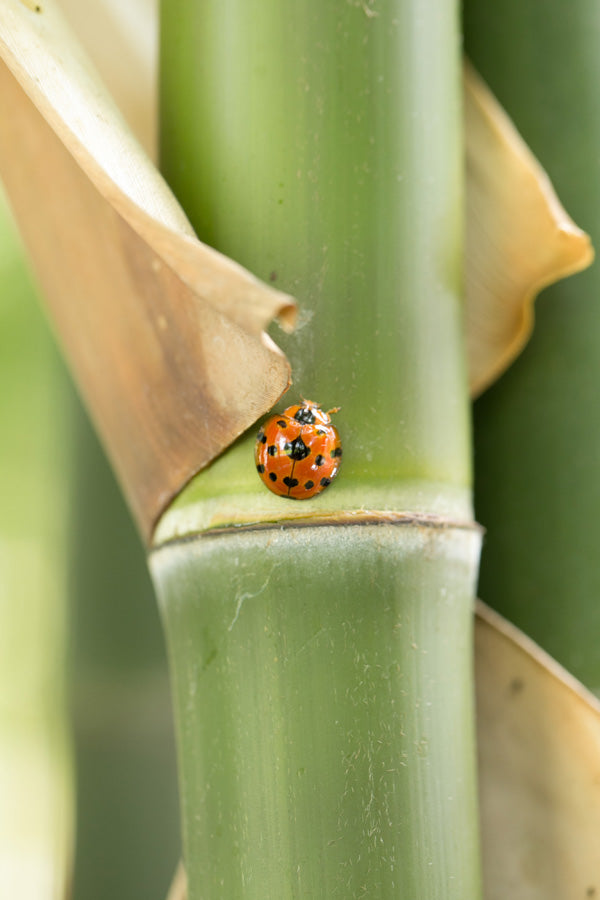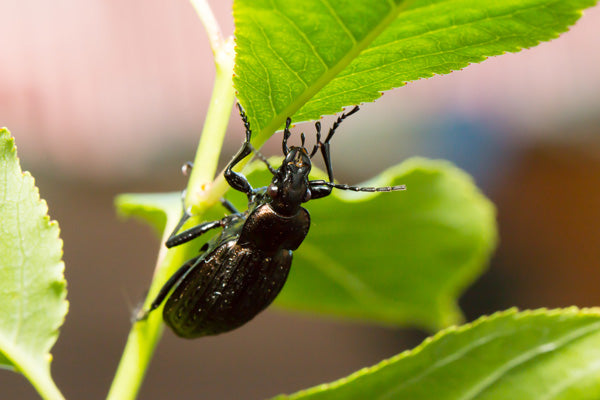Bamboo Pests
Generally, bamboo is not susceptible to bugs. It is one of the more resilient plants, which is what makes it a great option for container or in-ground planting.
If you see ants, this is a good indication of an infestation of either Aphids or Mealybugs. Not to worry, these pests rarely cause severe damage to the plants, unless left untreated. It is typically just an aesthetic issue.
If you happen to find these pests, there are simple steps that need to be taken to eliminate the problem before it becomes an infestation and more of a nuisance.
Aphids
Aphids are tiny insects that are nearly invisible to the naked eye. These small bugs have pear-shaped bodies that are green with 2 long antennae extending toward the back of their body. They also have 2 short tubes that look like antennae that extend from their rear end. They are coated in a waxy substance and shed their skin when increasing in size. The molted skin will have a white appearance and will vary in sizing. It takes between 7-10 days for this species to grow into full maturity.
The non-winged version of this insect is asexual – meaning males are not needed to create new babies. Females will release an average of 3-6 eggs per day in the fall season and can produce up to 80 offspring per week. Eggs will lay dormant until the spring when the temperatures start to rise. Wings are not typically found on this insect until the population becomes too crowded in an area. This can happen in early spring or fall. Once overpopulation starts, the aphids will develop wings and start a new colony in another area. Aphids are usually found in large groups. You will rarely see this bug by itself.
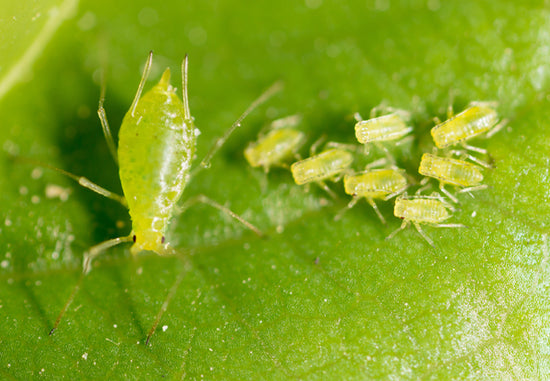
Dangers
Overall, the danger level is low for your bamboo. Aphids are not very harmful to bamboo's overall health and usually only pose cosmetic damages. The insects will feed on the bottom of the leaves where the plant sap is stored. When feeding on this sap, the aphid will produce excrement called Honeydew that can encourage fungus growth in the form of black, sooty mold. This will cause the leaves of the plant to yellow, wilt, and wither.
Ants will feed on the sticky honeydew that is secreted by the aphids. Typically, if you have a large population of ants nearby, there is a chance that you have an infestation of aphids as well. The ants will protect the aphids from (beneficial) predators making this a symbiotic relationship. Some predators include Ladybugs, Soldier Beetles, Hoverflies, and Lacewings.
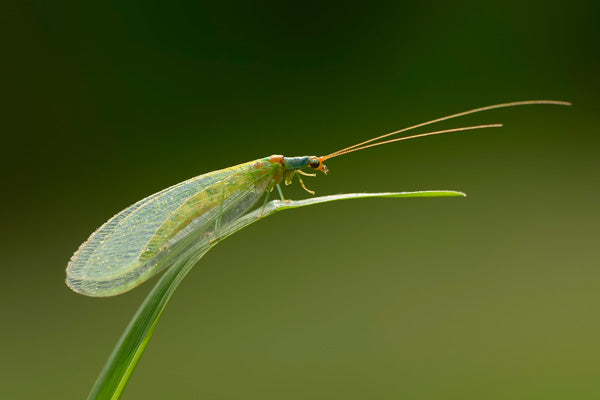
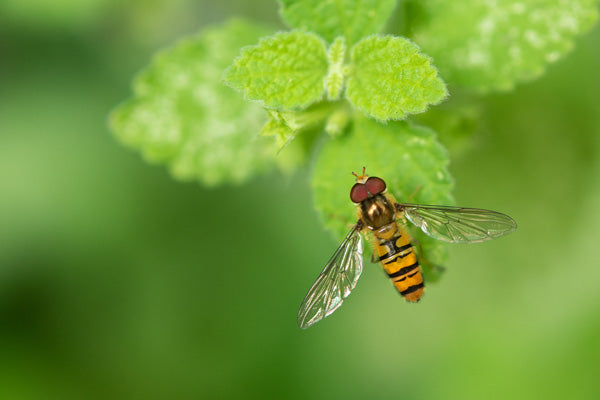

Treatment
The easiest way to control them is using soapy (antibacterial soap) water. Mix a few ounces of Dawn dishwashing detergent in a spray bottle of water. The only difficulty is applying the remedy because they are typically located at the base underside of foliage. The application of the control method is crucial. The spray needs to be applied directly and consistently onto the inhabited area. Heavily spray the underside and top of the foliage every couple of days for a week. This should control the problem and is safer for the environment than harsh chemicals.
Mealy Bugs
Mealybugs are small soft-bodied oval insects that are unarmored. Their body has many sections that are typically covered in a white powdery wax that serves as a protective barrier. They can resemble a tiny piece of cotton. These insects thrive in moist, warm habitats and are usually found at the bottom of stems.
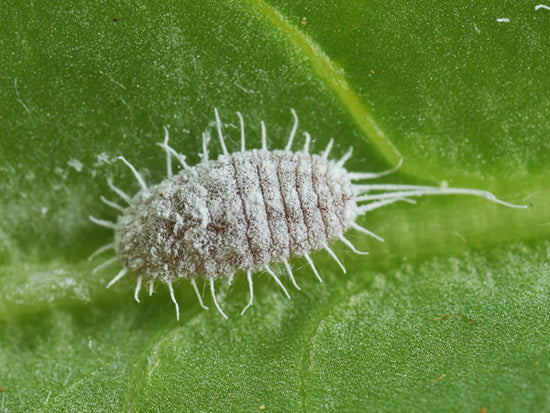
Mealybugs are asexual and will produce between 50-100 eggs at a time with a total of up to 600 eggs. The number of eggs that are laid will be temperature-dependent. Higher temperatures will result in fewer eggs being laid. The egg site will look like downy mildew and lasts about 2 weeks. Once hatched – in 1-3 weeks, the nymphs (babies) will be a light yellow-orange color. The males and females both have legs, unlike many insects of this type. The females will travel to an ideal feeding location and stay until it is time to lay their eggs. Males do not completely undergo metamorphosis but will develop wings and bear a resemblance to flying gnats. The males will rarely be seen as they do not feed at all as adults. Because of this, they are short-lived and are only useful for reproduction. After a female has laid all her eggs, she will die.
Dangers
The danger level is high. Mealy alone only pose a moderate risk. The risks increase because mealybugs are farmed by ants. Ants and mealy form a symbiotic relationship in which the ants facilitate spreading the mealybugs and the ants benefit from feeding on the honeydew produced after the mealybug feeds on the bamboo leaves. The ants also protect the mealybugs from predators and parasites. If mealybugs are in large quantities, it can cause leaf drop or yellowing and slow plant growth.
Treatment
A systemic product will be more effective but has a higher residual and toxicity. We typically use Talstar, Cygon, or Optigard Flex. There are many products to consider like Pyrethrin dusts and products like Temprid or Onslaught. Horticultural oil or a product like “Safer” will be more friendly but less effective and require more treatments.
Alternatively, you can introduce beneficial predators, which would be considered a biological control agent. Ladybugs, lacewings, and ground beetles.
